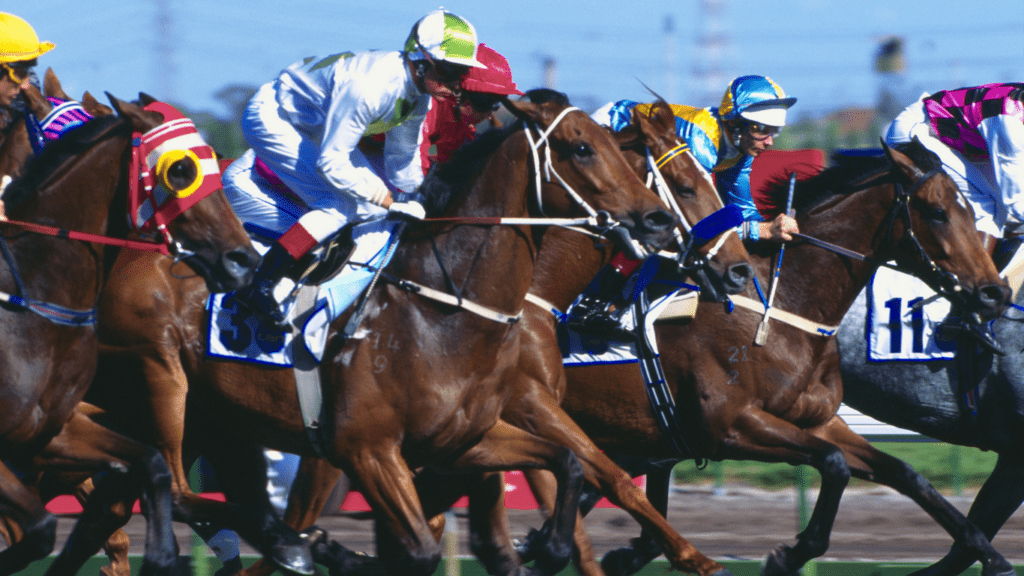Understanding Betting on Favorites
Betting on favorites involves wagering on teams or players expected to win. This approach usually presents fewer risks compared to betting on longshots.
Key Characteristics of Favorites
Favorites generally showcase higher performance metrics. They have consistent winning records and display top-notch skills and leadership. Oddsmakers assign them lower odds, reflecting their elevated chances of success. Public perception often sways odds due to a favorite’s reputation and past achievements.
Pros and Cons of Betting on Favorites
Betting on favorites offers predictable outcomes. It provides a sense of reliability backed by statistics and expert analysis. However, the potential payouts remain smaller since odds favor predictability. Limited financial returns may not compensate for cumulative losses from occasional upsets. Balancing these factors is crucial when choosing to bet on favorites.
Exploring Longshot Bets

Choosing longshots taps into the high-risk, high-reward nature of sports betting. These bets can be enticing due to their potential for substantial payouts despite the inherent risks.
Traits of Longshots
Longshots typically involve teams or players with lower chances of winning. They often display inconsistent performance metrics or face stronger opposition. Public perception shifts odds unfavorably, reflected in higher payouts. Notable upsets and unpredictable elements in their performance history add intrigue to longshot bets.
Advantages and Disadvantages of Betting on Longshots
- The primary advantage lies in the potential for large returns.
- With longshots, even a small stake can yield significant profits.
- Unexpected outcomes like a lower-ranked team defeating a favorite can result in sizeable winnings.
- The downside includes increased volatility and the higher probability of losses.
- Consistently backing longshots without a sound strategy often leads to financial setbacks, highlighting the importance of cautious assessment and calculated risk-taking in these scenarios.
Comparing Strategies: Favorites vs. Longshots
When comparing betting strategies, it’s crucial to evaluate the differences between backing favorites and wagering on longshots. These approaches require distinct considerations to optimize success.
Risk Assessment
Favorites present lower risk due to their higher winning probabilities. I focus on teams or players with solid records and strong public backing, as they offer more predictable outcomes. Longshots, on the other hand, carry increased risk. Their unpredictable performance and external factors demand thorough research and cautious consideration before placing bets.
Potential Rewards and Losses
Betting on favorites usually results in smaller rewards. Even with consistent wins, the margins remain narrow, sometimes insufficient to cover potential losses from occasional upsets. Longshots promise higher payouts. I find that even minimal stakes can generate substantial wins, though the likelihood of frequent losses persists, making it vital to balance high rewards against potential setbacks.
Expert Tips for Placing Bets
Understanding when to play it safe with favorites and when to take calculated risks with longshots is key to improving betting outcomes. Strategically approaching each bet increases the chances of success.
When to Play It Safe
Opting for favorites increases the odds of winning, offering a stable betting experience. I lean towards favorites under certain conditions:
- Consistent Performance: I bet on teams or players with a proven track record. A history of consistent wins makes favorites a safer choice.
- High-Stakes Matches: Favorites tend to perform well in significant games where the stakes push them to excel.
- Public Perception Influence: If public perception hasn’t overly inflated the odds, betting on favorites remains sensible. A balance between odds and performance is essential.
When to Take Calculated Risks
Longshots can yield spectacular returns, especially when conditions favor them. I consider longshots in these scenarios:
- Undervalued Teams/Players: I look for instances where bookies might undervalue a team or player. If performance metrics suggest a potential upset, it’s worth a risk.
- Inconsistent Favorites: If favorites have shown inconsistency, it implies opportunities for longshots to upset expectations and achieve unexpected victories.
- Shifted Public Perception: When public perception unfairly skews odds in favor of favorites, longshots become attractive. This skew can lead to inflated odds and higher potential payouts.
Balancing these strategic decisions enhances both the thrill and potential profitability of betting, ensuring a more rewarding experience.
Psychological Factors in Betting
Betting choices are often influenced by psychological factors, affecting how individuals assess risks and rewards. Understanding these can greatly enhance betting strategies.
Impact on Decision Making
Psychological biases significantly sway decision-making in betting. Confirmation bias leads people to favor information that supports pre-existing beliefs, potentially misjudging a favorite or longshot. The availability heuristic can cause overestimation of familiar events, such as a recent underdog win, leading to inaccurate betting assessments. Awareness of these biases allows for more rational evaluations, effectively balancing calculated risks.
Managing Emotions and Expectations
Emotions heavily impact betting behavior, often overshadowing logical analysis. Excitement from potential wins and fear of losses can drive impulsive decisions, particularly when betting on longshots with the allure of high payouts. Setting realistic expectations mitigates disappointment and prevents chasing losses. I find maintaining an objective approach, grounded in data rather than emotion, reinforces disciplined betting practices, enhancing both experiences and outcomes.



